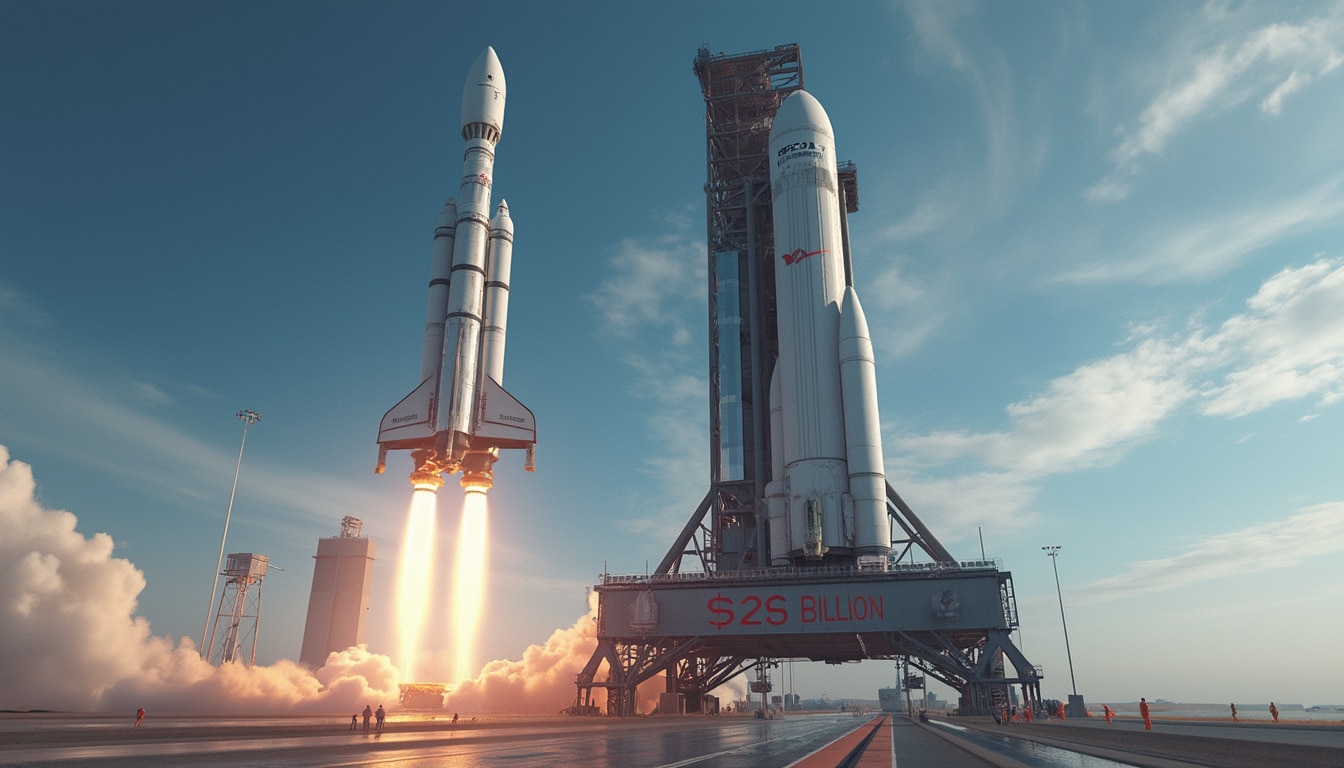The landscape of space exploration is evolving rapidly, with private enterprises making significant inroads into realms once dominated by government agencies like NASA. Amidst these changes, a prominent figure has emerged with ambitions to lead NASA into a new era: billionaire Jared Isaacman. His vision extends beyond mere space tourism; he aims to democratize space travel and tackle the ongoing challenges facing NASA. This article delves into Isaacman’s journey, the current state of NASA, and the implications of significant private sector involvement in space exploration.
The Vision of Jared Isaacman
Jared Isaacman, a name synonymous with the democratization of space, started his remarkable journey with a private mission to space in 2021. Financing this adventure with a personal investment estimated at $200 million, Isaacman has made it clear that he desires space to be accessible to far more than just a select few. His vision encompasses a future where 600,000 individuals, not just a few hundred elite astronauts, can experience the wonders of outer space. By fostering this ethos, Isaacman aims to transform space travel into a routine adventure.
Motivated by a lifelong passion for aviation and exploration, Isaacman has already marked substantial milestones in space history. Following his initial flight, he embarked on a mission that showcased human ingenuity: executing the first private spacewalk. This operation not only tested an experimental spacesuit but also introduced a modern protocol for spacecraft exit and re-entry, signaling possibilities for even more groundbreaking activities in space.

Challenges Facing NASA
NASA is at a pivotal junction in its history, grappling with numerous challenges. The agency, which once symbolized the pinnacle of space exploration, finds itself contending with funding constraints, antiquated technology, and the rising efficiency of private space companies. Programs like the Space Launch System (SLS) are facing scrutiny due to their exorbitant costs and inefficiencies, requiring upwards of $4.1 billion for each launch. This stark disparity stands in sharp contrast to SpaceX’s Starship, which boasts an estimated cost of only $100 million per launch!
Additionally, NASA’s approach has been burdened by technologic stagnation. While privatization can drive efficiency, for years, NASA has been entrenched in traditional project models that significantly delay timelines and inflate costs. Programs designed for ambitious missions to the Moon and Mars struggle not just due to financial limitations but also due to outdated methodologies that prevent quick adaptations and innovative solutions from being implemented.
The Role of Private Sector in Space Exploration
The private sector has emerged as a formidable player in the industry, providing innovative technologies and cost-saving methods that have begun revolutionizing space endeavors. Billionaires like Isaacman, Elon Musk, and Jeff Bezos challenge the historical foundations of space exploration by introducing fierce competition among their firms. Such rivalry has led to rapid advancements in reusable rocket technology and cost-efficient travel options.
Isaacman’s foray into private space missions is a testament to this shift. By personally financing crewed spaceflights and advocating for commercial missions, he has opened doors for future collaborations between NASA and private entities. This partnership approach could breathe new life into the agency’s projects, leveraging the technological prowess and agility of private firms to overcome the hurdles that constrict government-led initiatives.

Is Jared Isaacman the Right Person for NASA?
Amidst speculation surrounding Isaacman’s potential leadership role at NASA, crucial questions arise: Does a billionaire with a penchant for space tourism possess the necessary expertise to steer NASA through the turbulent waters ahead? His commitment to enabling wider access to space certainly resonates with many who believe exploration should not be confined to elite astronauts. However, leadership within NASA requires more than just a vision; it necessitates extensive knowledge of organizational operations, budget management, and the intricacies of governmental processes.
The Implications of His Leadership
If confirmed, Isaacman’s appointment could pave the way for reforms in NASA’s operational models, potentially shifting them away from cost-plus contracts that have historically benefited large aerospace corporations without fostering innovation. Such changes could usher in a new era where private companies are entrusted with significant missions, allowing NASA to focus on more ambitious projects like crewed missions to Mars or the next-generation space telescopes. Privatization could allow NASA to allocate resources more effectively and create a new budgetary framework that favors innovation and efficiency over traditional costs.
Future Aspirations for Space Exploration
As space exploration evolves, the aspirations of humanity stretch beyond just lunar landings and Mars missions. The potential for establishing human settlements on other planets or mining asteroids for resources is becoming a tangible goal. With figures like Isaacman at the forefront, the concept of a multi-planetary existence is no longer confined to the realms of science fiction. It is a real possibility that resonates with many who dream of a world where space travel becomes routine, akin to air travel in today’s society.
Expanding beyond Earth requires remarkable advancements in technology and collaboration between government entities and private companies. Isaacman’s vision aligns with this ambition. His endeavors emphasize collaboration, driving home the message that securing our future in space necessitates a collective effort from both public and private sectors. The aspirations of millions hinge on the success of these partnerships, and their capacity to innovate or adapt could determine whether humankind progresses toward becoming a true spacefaring civilization.

Mars Colonization: A New Horizon
The vision of establishing a human presence on Mars embodies the ultimate challenge and the promise of space exploration. Organizations like NASA aim to set foot on Mars in the next decade, with their Artemis missions laying the groundwork for sustained human presence on the Moon first. Meanwhile, private companies, led by the likes of SpaceX and Isaacman, aspire not just to visit these distant worlds but also to enable permanent human habitation. This evolution in thinking showcases a paradigm shift in how we regard our relationship with space.
The propulsion of technology drives these ambitious plans. Innovations in rocket design, life-support systems, and extraterrestrial farming are taking center stage. The prospect of sending humans to the Red Planet may require a blend of government oversight and private ingenuity, ensuring that safety and success go hand-in-hand.
Conclusion: The Path Forward for NASA and Space Exploration
As NASA navigates through fiscal realities alongside mounting pressure from private competitors, the need for transformative leadership has never been clearer. Jared Isaacman’s approach stands out for its potential to reshape not just NASA, but space travel as a whole. The path forward entails embracing change without discarding the invaluable lessons of past successes. The future of humanity’s exploration into the cosmos hangs in the balance, and whether Isaacman or a different visionary steps forward, the collaboration between public and private sectors will likely determine our next great leap into the stars.




Leave a Reply